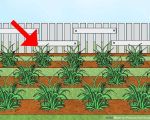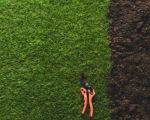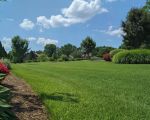How to Identify Common Lawn Weeds
Keeping a lush, green lawn can be challenging, especially when unwanted weeds start popping up. Whether you're an experienced gardener or a beginner, knowing how to identify common lawn weeds is essential for maintaining a beautiful garden. In this article, I’ll walk you through the process of identifying these pesky plants and offer tips for managing them effectively.
1. Understanding the Most Common Lawn Weeds
Lawn weeds come in many shapes, sizes, and types. Broadly, we can categorize them into two main groups: broadleaf weeds and grassy weeds. Broadleaf weeds, such as dandelions and clover, have wider leaves, while grassy weeds, like crabgrass, resemble your lawn grass but can spread quickly and crowd out healthy plants. Here’s a closer look at some of the most common types.
2. Broadleaf Weeds
Broadleaf weeds are notorious for their distinct, wide leaves that often stand out from your grass. Let’s go over a few common broadleaf weeds:
- Dandelions: Easily recognizable by their bright yellow flowers and fluffy seed heads, dandelions can quickly take over a lawn if not managed properly.
- Clover: Clover has small, rounded leaves and often appears in patches. It’s a nitrogen-fixing plant, which can sometimes help the soil, but it’s still considered a weed in most lawns.
- Chickweed: This fast-growing weed has small white flowers and can quickly spread across the lawn.
3. Grassy Weeds
Grassy weeds are a bit more challenging to spot since they resemble your turf grass. However, once you know what to look for, you’ll start identifying them easily:
- Crabgrass: Crabgrass is a common grassy weed that thrives in hot weather. It grows low to the ground and spreads in dense patches, often appearing in spots where your lawn is thin.
- Foxtail: Foxtail has a distinctive seed head that looks like a fuzzy tail. It’s a fast-growing weed that can quickly take over your lawn if left unchecked.
- Quackgrass: Quackgrass has long, narrow leaves and spreads by creeping rhizomes, making it difficult to remove once established.
4. Identifying Weed Characteristics
To effectively manage weeds, it’s crucial to observe their unique characteristics. Here are some tips to help you identify weeds in your lawn:
- Leaf Shape: Pay attention to the shape, size, and color of the leaves. Broadleaf weeds typically have larger, more noticeable leaves, while grassy weeds have thin, elongated blades.
- Growth Pattern: Observe how the weed grows. Does it spread horizontally, or does it shoot straight up? Understanding the growth pattern will help you determine if the weed is a grass-like species or a broadleaf type.
- Flowers: Many weeds have unique flowers that make them easy to identify. For instance, dandelions and clover both produce distinct flowers that are different from most grass species.
5. Managing Lawn Weeds
Once you’ve identified the weeds in your lawn, the next step is to manage them effectively. There are several methods for weed control:
- Manual Removal: If the weeds are few and far between, you can remove them by hand. Use a weeding tool or a hoe to dig them out, making sure to remove the roots to prevent regrowth.
- Chemical Herbicides: For more widespread infestations, you may need to resort to herbicides. Always choose a selective herbicide that targets the weeds but not your lawn grass. Follow the manufacturer’s instructions carefully.
- Organic Solutions: Organic weed control methods, like vinegar or boiling water, can help manage weeds without chemicals. However, they may not be as effective on larger or deeply-rooted weeds.
6. Preventing Future Weed Growth
Prevention is key to maintaining a weed-free lawn. Here are some tips to keep weeds from returning:
- Overseed Your Lawn: Regularly overseed your lawn to help it grow thicker and prevent weeds from taking root in thin spots.
- Proper Lawn Care: Keep your lawn healthy by fertilizing it, watering it properly, and mowing it regularly. A healthy lawn is less likely to attract weeds.
- Mulching: Use mulch around flower beds and trees to block weed growth. Mulch acts as a barrier that prevents weeds from getting the sunlight they need to grow.
7. Common Weed Identification Mistakes
Sometimes, we can mistake certain plants for weeds. Here are a few common mistakes to avoid:
- Misidentifying Clover: While clover can be considered a weed, many people forget that it can be beneficial for lawns, as it helps fix nitrogen in the soil.
- Confusing Grass-like Weeds: Some grasses like ryegrass and fescue are commonly used in lawns, but they may resemble weedy grasses like crabgrass. Be sure to distinguish them by looking closely at their growth habits and leaf structure.
8. Real-Life Example: Battling Crabgrass in My Lawn
I remember the first time I noticed crabgrass creeping into my lawn. It was during a hot summer, and I noticed a few patches of grass-like weeds growing low to the ground. I quickly realized that these were not regular grasses but crabgrass. It spread quickly, and I had to act fast to prevent it from taking over. I used a selective herbicide to tackle the issue and followed up with overseeding in the fall to fill in the thin spots where the crabgrass had grown.
9. Conclusion
Identifying and managing lawn weeds might seem like a daunting task, but with the right knowledge and tools, it’s something you can handle. By understanding the characteristics of common weeds, you can effectively keep them under control and maintain a healthy, vibrant lawn.








